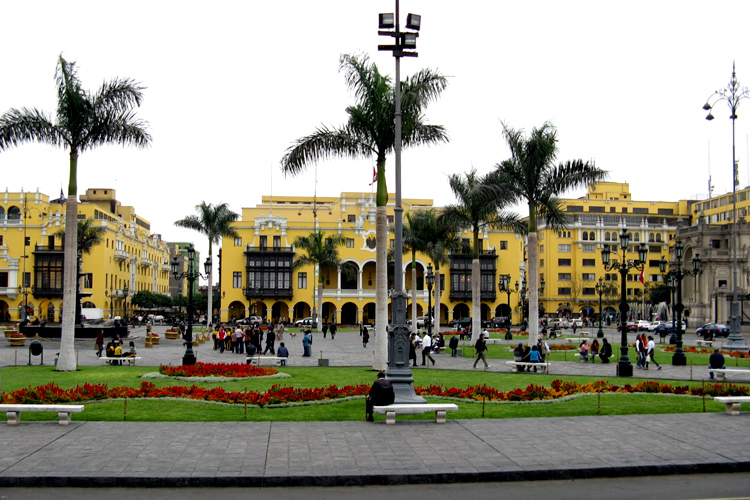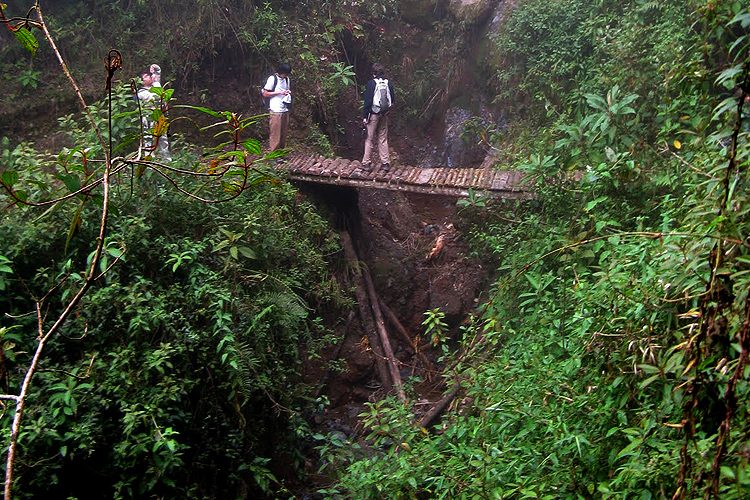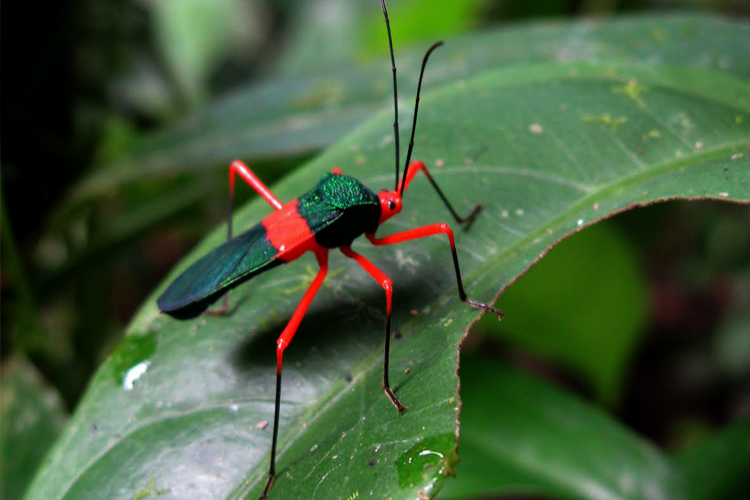It’s not every undergraduate class that results in a new scientific discovery, but in Megan Frederickson and John Stinchcombe‘s Tropical Field Biology course, they do things a little different.
The course — in which the jumping behaviour of a particular forest caterpillar was discovered in 2013 — sees students traveling to a remote environment and conducting meaningful research, something often not covered until graduate school.
“This course helped me discover a passion for field work,” says Rachel Wilson, who is now pursuing a master’s degree in botany. “During my undergrad, this was an absolutely life-changing experience.”
In recent years, the course has taken place in the remote cloud forests, high-elevation grasslands, rivers and rainforests of Peru.
After spending four or five days on the slopes of the Andes Mountains at about 3,000 metres above sea-level, Professors Frederickson and Stinchcombe and 20 students spend 8-9 days in the Amazon.
“We hope all this exposes students to the challenges and opportunities of doing research in one of the most biologically fascinating and unexplored regions of the world,” says Frederickson, currently the driving force behind the course.
Classroom in paradise
Getting to the course’s main field station requires travel by jet from Toronto to Lima and then to Cuzco, a van excursion through the windy, vast lowlands, and finally, a two-day boat ride down the Alto Madre de Dios River.
Slightly larger than Ontario, Peru is home to several million insect species, 25,000 varieties of plants, 1,500 species of birds, 800 species of reptiles and amphibians, and more than 400 species of mammals. The lush Peruvian rainforest contains more biodiversity than anywhere else on Earth: one-in-10 species on Earth live in the Amazon (for birds and fish, it’s one-in-five) with dozens of new species being discovered yearly.
A 2001 study estimated that one square-kilometre of Amazon rainforest can contain 100 million kilograms of plant life.
“In Peru, it was so awesome to actually learn outside of the classroom and observe things I had only been able to read in textbooks,” says Emilia Ling. “John and Megan were extremely knowledgeable and supportive, which made the experience that much better.”
While in the field, students get to see first-hand ecological changes that come with elevation, and to experience and learn what it’s like to do tropical field work of their own.
Ask the experts
“Throughout our time in Peru, we have group exercises designed to teach the basics of ecological field work and sampling, paper discussions, and student presentations,” says Stinchcombe.
The group is often accompanied by Megan’s husband, Antonio Coral, who was born in the Peruvian Amazon and spent many years there as a guide.
“He’s the only person I know who can imitate the calls of monkeys, birds, and peccaries, and kiss a tapir,” says Stinchcombe. “Walking in the jungle with him, you’re guaranteed to see spectacular wildlife that most of our students would never have the opportunity to see otherwise.”
Stinchcombe notes there’s a heavy emphasis on exploring field sites, stopping to talk about natural history, and observing tropical ecosystems on foot.
Learning by doing
The culmination of the course is an independent research project carried out by students, in which they pose a question, gather their own data, and then write up a paper in the format of a scientific journal article.
“We studied how natural barriers, such as mountains, can affect speciation and abundance of species, as well as learning how rainforest ecology allows for great diversity and distribution of species,” says Katrine Handley Derry, who was a third-year ecology & evolutionary biology student when she took part. “I discovered a lot about specific plants in each region, including their distinctive adaptations to their environmental conditions. I also learned about plant-animal interdependence and its importance in the functioning of rainforest ecosystems.”
Some of the discussions of the students’ papers even take place in the exact locations where the research was conducted.
It’s a model for what Stinchcombe feels could be a future component of undergraduate learning, in terms of plugging students in to what’s possible for their academic future, and giving them additional confidence at a critical time in their school careers.
A lasting impression
“We want students to gain a first-hand appreciation of places that until this point they’ve only ever read about,” he says. “We also want them to gain an appreciation for the challenges and excitement of asking research questions in the field…using sound scientific techniques to try to answer them.”
Countless students who’ve participated in the course say that their two weeks in Peru were a turning point in their undergraduate years that helped them to discover what they wanted out of their education and career-path by fine-tuning their critical thinking skills in an environment they could have never expected.
“This field course was one of the best experiences of my undergrad. It really made me appreciate how much time and effort goes into scientific research, especially field biology,” says former course participant Stephanie Muckle. Adds Teresa Maddison: “It allowed me to realize the application of all the textbook-and-lecture-based-learning I’ve done, while meeting amazing peers and professors whom I can now call friends.”
Research from the Andes to the Amazon Photos




